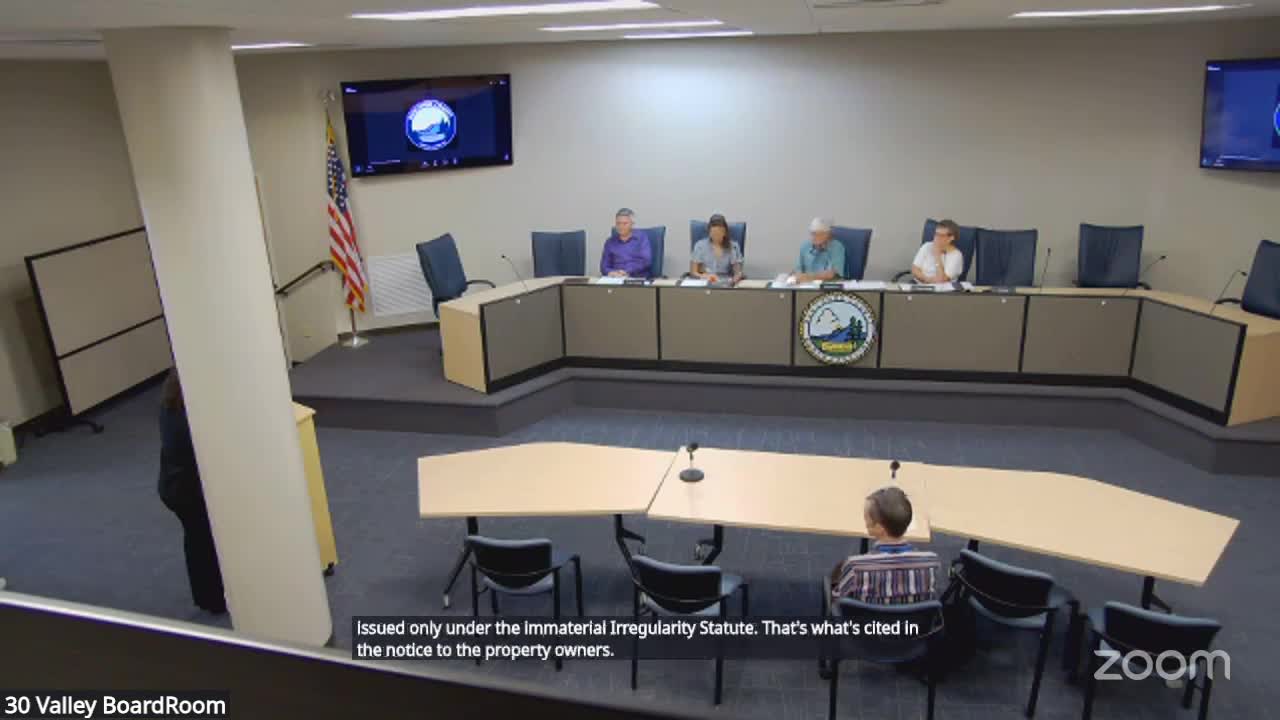Tax Assessor Clarifies Statutes for Collecting Back Taxes on Immoral Irregularities
August 18, 2025 | Buncombe County, North Carolina
This article was created by AI summarizing key points discussed. AI makes mistakes, so for full details and context, please refer to the video of the full meeting. Please report any errors so we can fix them. Report an error »

The Board of Equalization and Review Meeting for Buncombe County, North Carolina, held on August 18, 2025, focused on the discussion of tax assessment statutes and their implications for property taxation. The meeting began with an overview of three key statutes that guide the tax assessor's ability to adjust property values due to various errors.
The first statute discussed was the immaterial irregularity statute, which allows for the collection of taxes for up to five years for prior years. This statute addresses minor clerical or administrative errors that do not invalidate the tax imposed. Examples of immaterial irregularities include the failure of an officer to take an oath, the board's failure to meet timely, and defects in property descriptions.
Next, the discovered property statute was reviewed. This statute applies to real property or structures that were not previously taxed and allows for their appraisal as newly discovered. It provides taxpayers the opportunity to prove that the property did not exist in prior years or that it was not their duty to list it for taxation. However, it does not allow taxpayers to contest newly issued appraisals under this statute.
The third statute discussed was section 105-287, which pertains to changes in appraised property values in non-reappraisal years. This statute permits the assessor to correct clerical or mathematical errors and recognize changes in property value due to physical alterations or other factors. Unlike the immaterial irregularity statute, section 105-287 only allows for prospective changes in assessed value and does not permit the collection of taxes for prior years.
During the meeting, a board member inquired about the formal title of section 105-287, which was confirmed to be "changing appraised value of real property in years in which general reappraisal is not made."
The discussions highlighted the complexities of property tax assessments and the legal frameworks that govern them, ensuring that the county can maintain accurate tax records while providing taxpayers with avenues to address discrepancies. The meeting concluded with a clear understanding of the statutes' applications and their implications for both the county and property owners.
The first statute discussed was the immaterial irregularity statute, which allows for the collection of taxes for up to five years for prior years. This statute addresses minor clerical or administrative errors that do not invalidate the tax imposed. Examples of immaterial irregularities include the failure of an officer to take an oath, the board's failure to meet timely, and defects in property descriptions.
Next, the discovered property statute was reviewed. This statute applies to real property or structures that were not previously taxed and allows for their appraisal as newly discovered. It provides taxpayers the opportunity to prove that the property did not exist in prior years or that it was not their duty to list it for taxation. However, it does not allow taxpayers to contest newly issued appraisals under this statute.
The third statute discussed was section 105-287, which pertains to changes in appraised property values in non-reappraisal years. This statute permits the assessor to correct clerical or mathematical errors and recognize changes in property value due to physical alterations or other factors. Unlike the immaterial irregularity statute, section 105-287 only allows for prospective changes in assessed value and does not permit the collection of taxes for prior years.
During the meeting, a board member inquired about the formal title of section 105-287, which was confirmed to be "changing appraised value of real property in years in which general reappraisal is not made."
The discussions highlighted the complexities of property tax assessments and the legal frameworks that govern them, ensuring that the county can maintain accurate tax records while providing taxpayers with avenues to address discrepancies. The meeting concluded with a clear understanding of the statutes' applications and their implications for both the county and property owners.
View full meeting
This article is based on a recent meeting—watch the full video and explore the complete transcript for deeper insights into the discussion.
View full meeting
